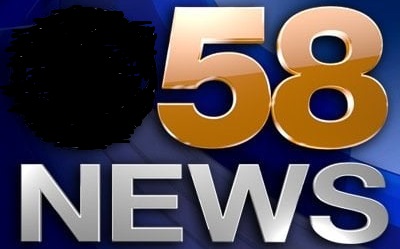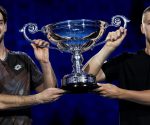The wacky weekend when Great Britain ended 79 years of Davis Cup hurt

The year 2015 was not a good one for England at World Cups. In cricket, Eoin Morgan and his men were knocked out by Bangladesh. In rugby, home advantage could not prevent England crashing out in the group stage as the southern hemisphere dominated.
But as the year drew to a close, British sports fans would enjoy an unexpected fillip. In the unlikely surroundings of Ghent – a medieval city so lovely it could have been plucked from a snow globe – Andy Murray and company ended one of sport’s longest droughts.
Thirty years of hurt? Try 79 years since Great Britain had won the Davis Cup. This venerable competition – which is subtitled “The World Cup of Tennis” – was founded as an annual head-to-head showdown between Brits and Yanks, but had become more of a Eurovision Serve Contest in recent years, with Spain, Serbia and Switzerland all benefiting from their resident maestros: Rafael Nadal, Novak Djokovic and Roger Federer.
Over, then, to Murray. Often derided as the Ringo Starr of tennis’s “Fab Four”, he nevertheless came up with a few banging tunes of his own. And in the Davis Cup of 2015, he did something that no one else has ever matched in the 125-year history of the event. He won 11 live rubbers in a single campaign – eight singles and three doubles – without losing a match.
Here was the only viable path to the trophy, given that GB were over-reliant on Murray and brother Jamie in the absence of any other top-100 players. For a few days in November 2015, the small Scottish town of Dunblane (population: 10,000) became the global capital of one of the world’s most cosmopolitan sports.
Round 1, 6-8 March: Great Britain 3, USA 1
Before the tennis mandarins messed with the Davis Cup’s format, you needed to win four ties, each lasting a whole weekend, to seize the spoils. GB’s journey began at Glasgow’s Emirates Arena, in a match that offered Scottish fans a first chance to see the Murray brothers on home soil in four years. Tickets reportedly sold out in 10 minutes. But the hero of the tie turned out to be an Englishman: James Ward, the son of a London cabbie.
Despite going two sets down to John Isner, the seven-foot servebot who was then ranked 91 places above him at No 20, Ward suddenly found many snappy returns and inched through the deciding set of a match which lasted almost exactly five hours.
“It has to be No 1,” said Ward last week, when asked where the Isner win ranks in his personal gallery of tennis highlights. “I’d put a lot of effort in when we weren’t in the World Group and Andy wasn’t playing, I’d been involved in all those ugly ties in Bolton and Coventry, so this was almost a reward for my hard work.”

Ward’s shock win – later supplemented by Andy Murray’s two singles victories over Isner and American No 2 Donald Young – put GB on the road to a 3-1 victory. The whole tie was a wonderful occasion in a packed indoor arena, soundtracked by lusty choruses of “The Bonnie Banks o’ Loch Lomond”.
Quarter-final, 17-19 July: Great Britain 3, France 1
Even as England’s cricketers were self-destructing in the second Ashes Test at Lord’s, Andy Murray again offered a ray of sunshine as he drove GB to a famous win against an even older foe: the French.
And they did it at one of tennis’s most historic venues: Queen’s Club, five miles to the south-west of Lord’s, which boasts a red-brick Victorian clubhouse of its own.
The French at this time were picking from the so-called “Four Musketeers”: Jo-Wilfried Tsonga, Gilles Simon, Richard Gasquet and Gaël Monfils. But Murray played the villain: Milady de Winter, perhaps? Since coming of age on his 21st birthday, he had never lost a best-of-five-set match to a Frenchman.

Despite that record, the tie looked in the balance when Simon went a set and a break up in the fourth rubber. Murray had just come off a run to the semi-finals of Wimbledon – where Federer had brutally ambushed him – and was playing his third match in as many days. He looked blank faced, glassy eyed and wobbly legged, like a boxer after too many punches. But he stoically refused to yield, coming back to win in four sets before sobbing on his chair in exhaustion.
For Jamie Murray, this was his favourite tie of the whole sequence, partly because he delivered a masterful performance to help his brother see off Nicolas Mahut and Julien Benneteau in Saturday’s doubles. “It was an iconic venue and a glorious sunny weekend,” he recalled. “Even the French had a lot of fans in, which made for a great vibe. I guess it was easy for them to catch the Eurostar.”
Semi-final, 18-20 Sept: Great Britain 3, Australia 1
Back to Glasgow for this soft-ball coda to cricket’s Ashes summer, and a match which represented GB’s third successive tie against a fellow grand-slam nation. Andy Murray was imperious again, despite a dicky back, as he despatched Australia’s two singles representatives – Thanasi Kokkinakis and Bernard Tomic – in straight sets.
The tricky bit was the doubles. Murray was such a Lleyton Hewitt superfan in his youth that he even called his dog Rusty, Hewitt’s nickname. Now, up against the doubles combo of Hewitt and Sam Groth – a 6ft 4in behemoth who still owns the fastest serve ever recorded – the Scottish brothers briefly faltered with victory in sight. A chance to serve for victory in four sets went begging, probably because both men were all too aware of the escalating stakes. But they pulled themselves together, broke the mighty Groth serve, and staggered home 6-4 in the fifth.

“That doubles match was stressful, because you knew what was on the line,” Jamie explained. “With Andy only needing to beat Tomic on day three, we were effectively playing for a place in the final. We were also very aware that the other semi-final, Argentina versus Belgium, involved two teams that we would have expected to beat.”
Final, 27-29 Nov: Great Britain 3, Belgium 1
The final was played under the shadow of a terrorism alert. Only a fortnight earlier, Paris had been targeted by Islamic State fanatics, who massacred 90 people at the Bataclan theatre and another 40 around the city.
The cell behind the attacks turned out to have been based in the Brussels suburb of Molenbeek, leading to warnings from the Foreign Office about avoiding crowds in Belgium. Travel links across the border were disrupted as police searched for plotters. The British team went by private jet, while pundit Tim Henman cancelled a family trip, saying “I just thought: ‘Is it really worth the hassle for them?’”
In the end, most of the British fans stuck with Plan A and took their seats at the Flanders Expo, a low-ceilinged warehouse in an industrial estate that stood next to a giant Ikea. Despite the undoubted beauty of Ghent’s historic centre, this wasn’t the most glamorous of venues.
Nevertheless, the Belgians put on a fine show. “There was a great opening ceremony,” recalled team captain Leon Smith, “where the court was hidden behind white curtains, they counted down from 10 and then the curtains dropped. The noise was dynamic.”
With Ward in a form slump, Smith threw in 20-year-old Kyle Edmund – a semi-finalist at the Australian Open two years later – for the opening rubber against diminutive Belgian No 1 David Goffin. It looked like a masterstroke – until Edmund ran out of gas completely after taking a two-set lead.
But Andy Murray wasn’t going to let Goffin become a famous Belgian. His assiduous preparations had included practising on clay – the surface chosen by the hosts – in the middle of the hard-court ATP Finals a fortnight earlier. He rolled past the genuinely obscure Ruben Bemelmans, and then teamed up with Jamie to take the doubles tie in front of 13,000 raucous and partisan fans. As one banner in the crowd put it, “Keep calm and Murray on.”
With GB leading 2-1, the old format required the two No 1s to play the first singles match on the Sunday, followed by the two No 2s. As Ward explained, “Leon said to me, ‘If Andy doesn’t get the job done, I’m throwing you in against Steve Darcis [whose Davis Cup record in deciding rubbers was 4-0]. So it was a bit of a relief when Andy hit that backhand lob to finish Goffin off. I was the first one to jump on him.”
As Smith added, “Andy fell on his back rolling around, and then everyone piled on top of him. But of course he’s claustrophobic, so we heard him saying, ‘Get off, I can’t breathe!’”
The Aftermath
Smith’s men had no serious competitors for “Team of the Year” at the BBC Sports Personality Of The Year Awards, but the individual prize was a tighter call. Lewis Hamilton had won the Formula One world championship, Jessica Ennis-Hill the world heptathlon title, Chris Froome the Tour de France and Tyson Fury three of the four world heavyweight belts.
Nevertheless, Andy Murray still snagged 35 per cent of the vote as he collected his second SPOTY award in three years. Elsewhere, Smith remembers a trip to 10 Downing Street, although it’s hard to imagine Murray peeing in the flowerbed as his equally famous namesake Andrew Flintoff had done 10 years earlier.

One thing you won’t hear Smith talk about is the morning-after press conference at the team hotel. It was amusing to watch the expressions of assorted Lawn Tennis Association employees when they realised that the players had come not to praise the LTA, but to bury them. Complaints rolled in about wasted money, feeble junior pathways, and the recent closure of London’s main performance centre in Roehampton.
Ah, British tennis. Never far from an own goal, even in the wake of an historic triumph. Ten years on, the debates about ineffectual development networks continue to this day. As a panellist on BBC Radio Four’s Unbelievable Truth recently put it, Judy Murray’s womb has still arguably produced more world-class talent than the rest of the LTA’s pipelines put together.










